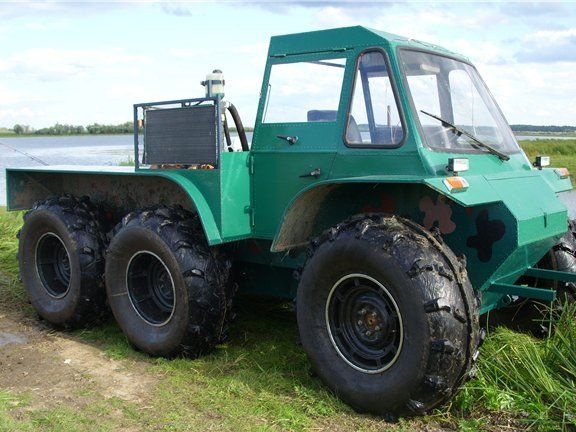
Once the author of this all-terrain vehicle woke up and decided that it was time for the construction of the all-terrain vehicle of which he had long dreamed.
To begin with, he read most of the forums on the topic of all-terrain vehicles and their construction. all-terrain vehiclespneumatics. Therefore, having looked at what details he has in stock, or wallow in the garage, or which are easy to get in his city, he decided to build a 6 by 6 all-terrain vehicle, the supporting body of which should be a carriage layout. In general, the dimensions of the all-terrain vehicle did not come out small, but all because the author wanted not only the all-terrain vehicle as such, but the all-terrain vehicle of his dreams, therefore he should not only easily overcome all types of land and water barriers, but also serve as a mobile home (if suddenly fishing or hunting will drag out for example). Moreover, it should fit comfortably up to two people.
Consider a set of parts and basic materials used by the author to build this model of pneumatics:
1) The internal combustion engine was selected from the Oka model 11113.
2) the front and rear axles were removed from Oise (they are collective farms, 37 teeth) also running ahead, I’ll say that the author cut them off by the type of front axle of a cornfield.
3) The steering column was taken just from the Niva.
4) As for the wheels of the all-terrain vehicle, here the author decided to take the KF-97 brand with dimensions 1065 by 420 by 457 (naturally he peeled them off in order to lose weight)
5) The body built a homemade, bearing type, like a boat (which will ensure the buoyancy of such a large all-terrain vehicle)
6) As for the suspension, A-shaped levers were used, as well as shock absorbers such as springs.
7) The steering gear from the UAZ model 31519.
In general, having previously weighed these details, plus having calculated the refinement and the frame, the author wanted to fit into the mass of about 800-850 kilograms. The speed of the all-terrain vehicle, as planned, was supposed to be about 45-50 km per hour.
As for the dimensions of the machine, they will be as follows: length about 3.8-4ech meters, width 2 meters 10 centimeters, height meter ninety centimeters. The body will be lined with water plates with a thickness of 1 mm to the waterline, and aluminum duralumin with a thickness of 0.5 centimeters will be on top, it is due to these materials that it is planned to keep within the specified weight of the structure, because the author does not need a heavy weight, but easy handling.The bottom of the body frame will be from corners of 45 to 45 mm (but this is only because the author did not have, unfortunately, a 20 by 40 profile, but the top will have a corner of 25 by 25 and 15 by 15.
Whether the author was able to achieve the result that you were striving for so much, you will find out at the end of the article.
In the meantime, consider in more detail construction this all-terrain vehicle, its problems, vulnerabilities and naturally advantages.
To begin with, the author decided to assemble the same frame in the likeness of a boat, here are the first photos of the assembly:
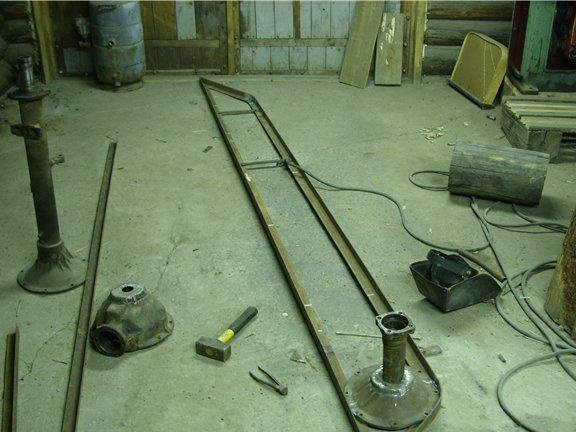
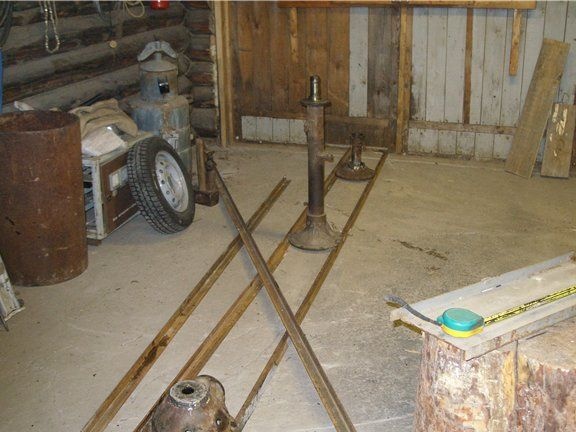
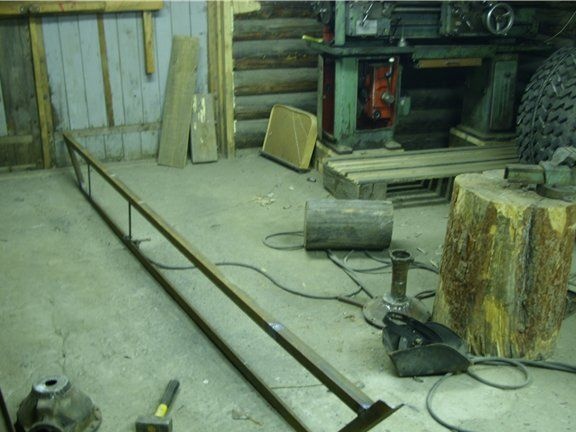
Moreover, the void of the boat is then planned to be foamed with mounting foam (it will provide better buoyancy and better insulation.
Carbide will be used to weld 1 mm sheets, it is also acetylene, but a 2 mm electrode and reverse polarity will be welded to the corners, so that the part is not bent (after all, 3 meters long), the dotted welding method will be used.
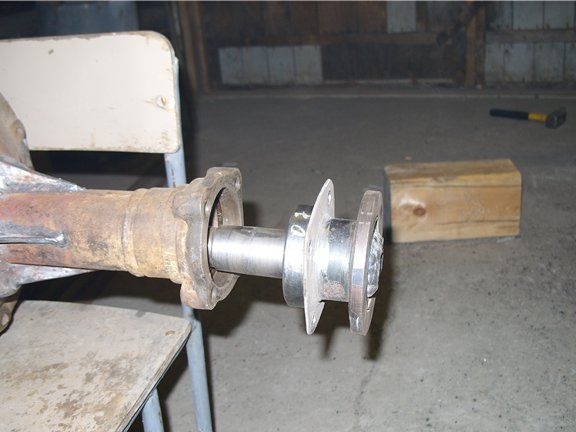
Such a semi-axis from Oise was used, and as seen from above, a 35 mm grooved bush was installed, bearing 207, bearing 207, then a housing with two oil seals, and a flange for the UAZ universal joint.
And so here we already see the frame assembly, in addition, the location of the internal combustion engine and the steering column from the field is traced, in the end it will turn out just like that, except that the engine will be lowered down by 10 centimeters in the interests of better stability.
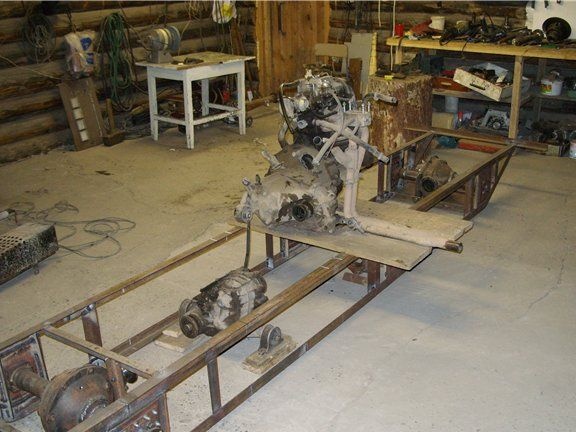
After installing the steering column, it was decided to make a third fulcrum in order to avoid unnecessary shaking. SHRUS was taken from Oka and adjusted to the design. It remains to dress the sleeve and scald.

And here the seat is already set and the details on the frame are completed:
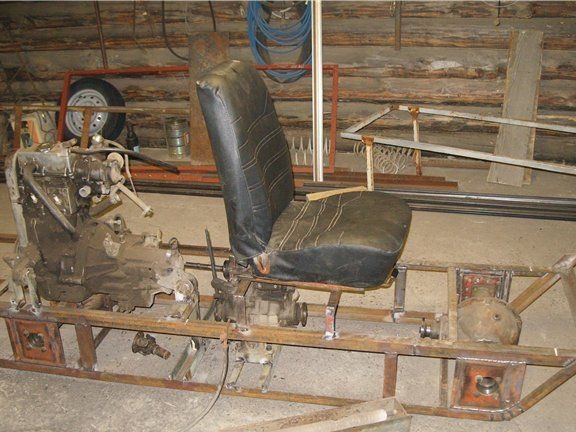
The drive to the front axle was made:
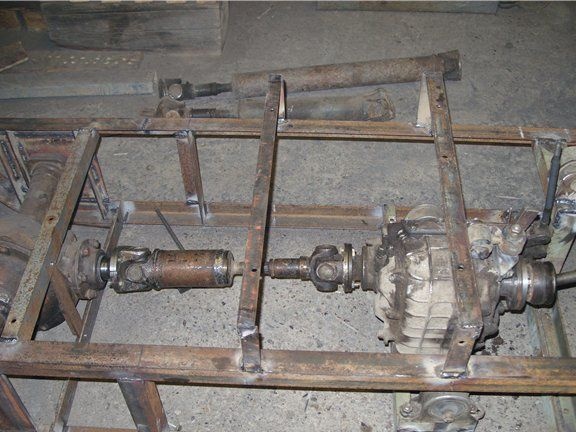
Having got a little acquainted with the thematic forums, the solutions of the rear-wheel drive were found, and it includes the rejection of the hexagonal gear (problems in its severity, complexity of work, and the author was not able to select the components). Therefore, it was decided to make a chain drive of the third bridge, as well as a mechanism for disconnecting it. The design turned out much easier and simpler. In the photo below you can see the device, as well as the shutdown mechanism:
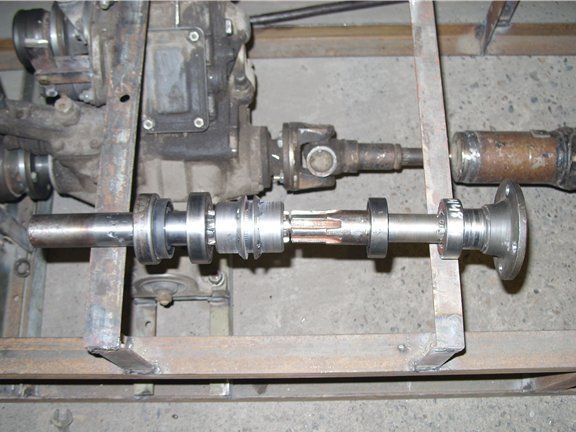
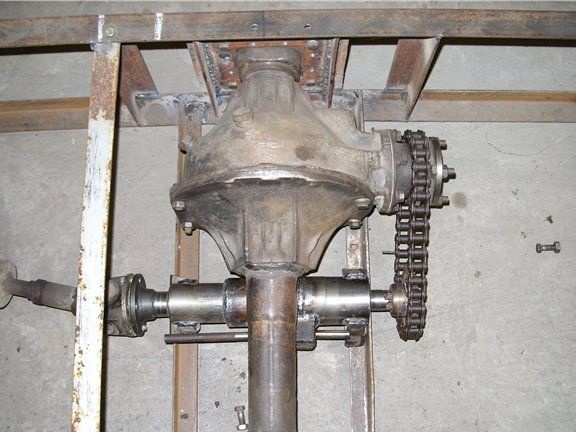
The next step was brewed bottom and sides of the bottom of the boat frame. Let me remind you that it was planned to use metal with a thickness of only 1 mm, but because of the fear of tearing the boat on stones or ice, it was decided to use a thickness of 1.5 mm so that there was a margin of safety. Subsequently, this will lead to an increase in mass.


In the photo above, the ears are welded for the rear suspension, or rather its levers.
And so here is the assembled body base:
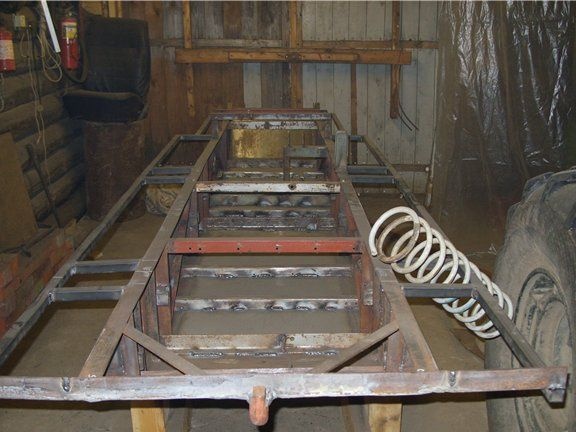

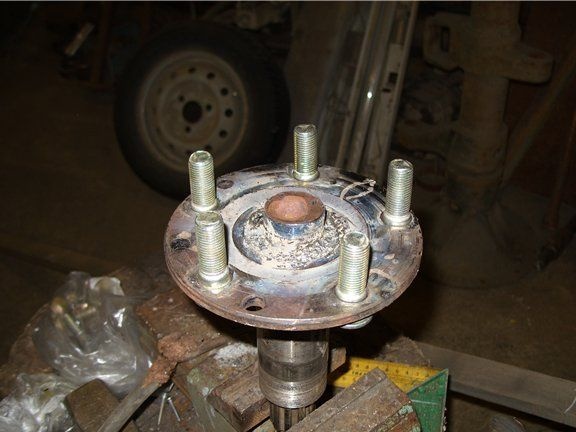 [/ center]
[/ center]The photo above shows the assembled shaft.
And here is the stocking of the bridge from the ZIL-157, from which the supports for the front fists were sharpened:

For the suspension arms, a 40 by 40 by 2 pipe was used:

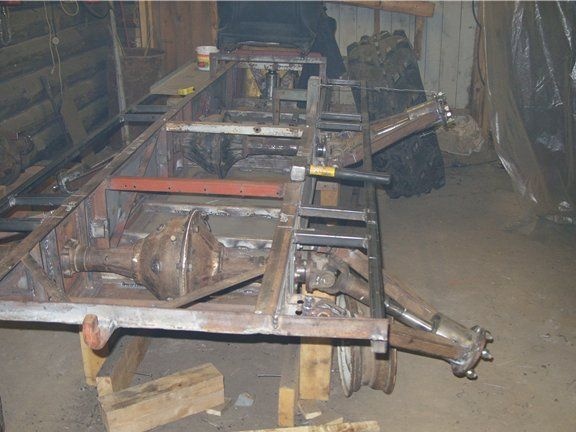
The image below shows the future suspension move:

Then the author began to build the body:
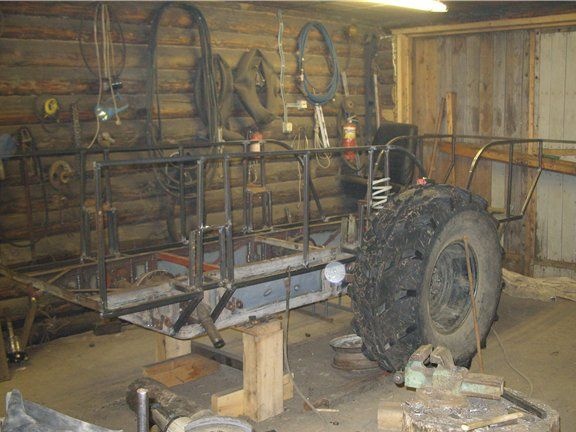
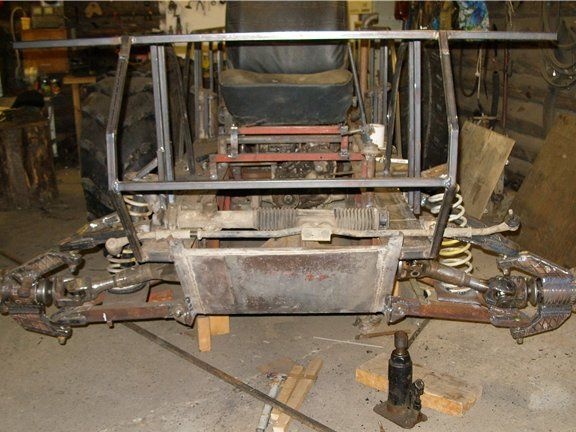
Photos for those wishing to consider the suspension device in more detail:
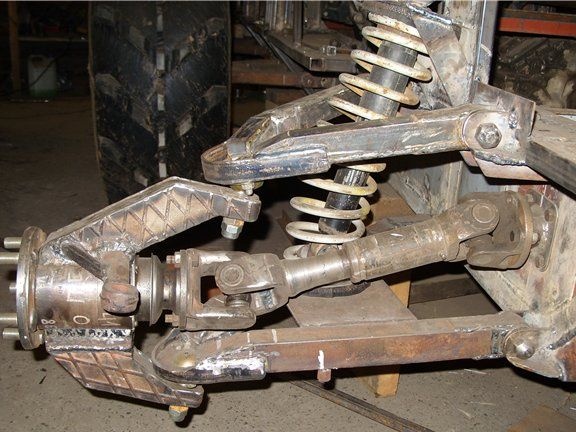
The angles of rotation of the wheels are about 32 degrees:
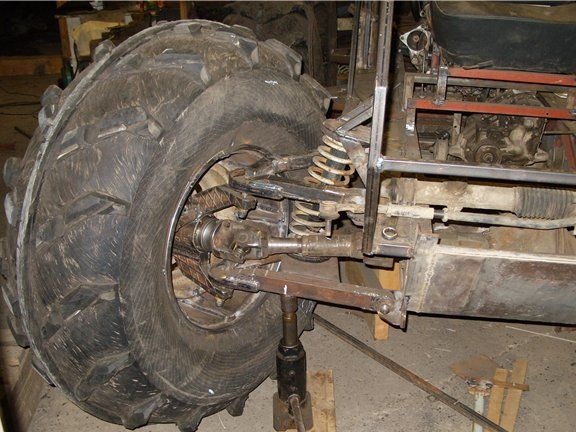

Due to the short upper arm, the suspension travel was only 25 centimeters:

I recall since thicker steel was used and the mass of the all-terrain vehicle will be increased, the author decided to use a more powerful engine than from oki, put the Vaz 21083+ native gearbox:

the drive is made in a similar way:
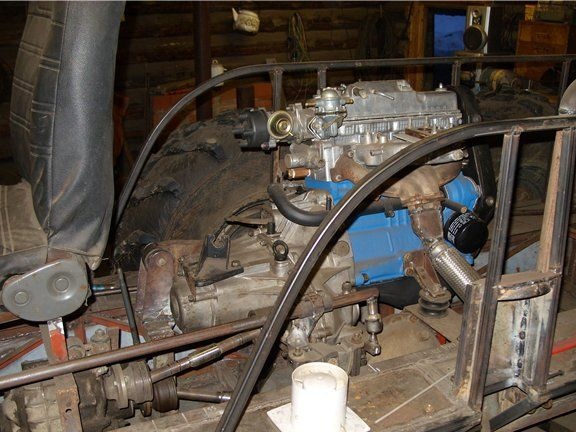
Here is the basis of the all-terrain vehicle:
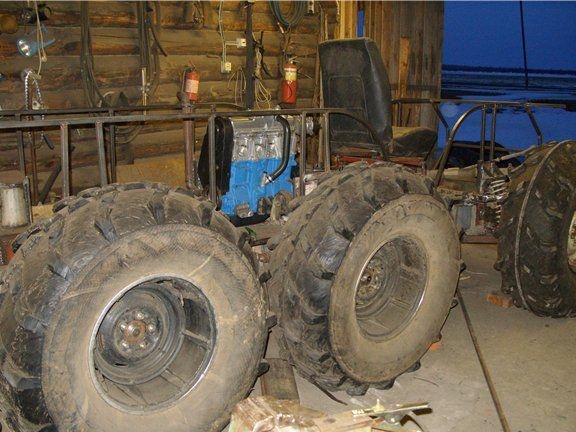
The steering is composite, that is, the rack from the VAZ 21099, but the clutch pedals, gas, the brake from the Oka, in fact, like the stove:
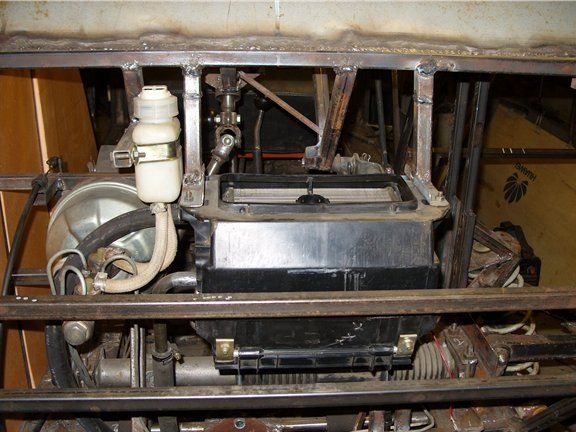
Beginning of installation of the cabin frame (the windshield was taken from the Oka), the wings are made of 20x20 and 15x15 pipes. He took off the wheels so that it was easier to crawl under the car:
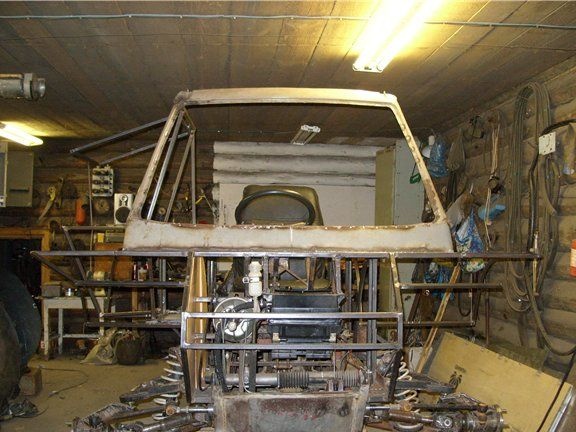
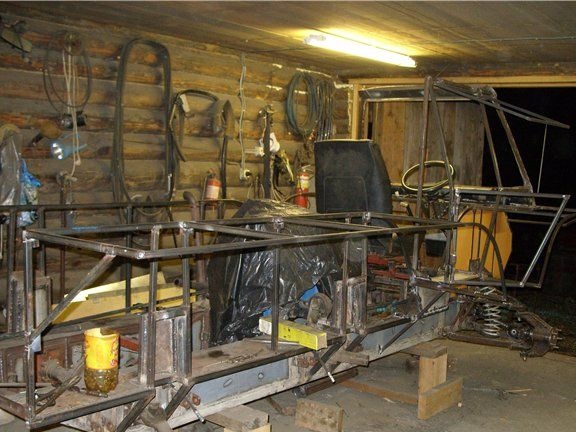
As for the location of the door, it will be on the right, the lower part is like on an Oise, and the upper one goes up. Insulation cut out for the whole cabin:
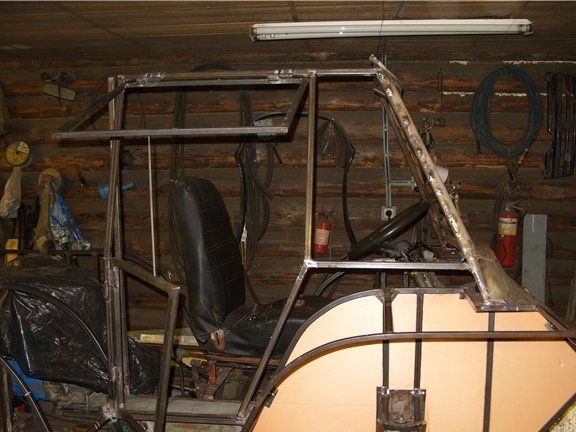
But the author himself is already on the finished machine:
Travel videos:
A kung was installed in order to spend the night in comfort:

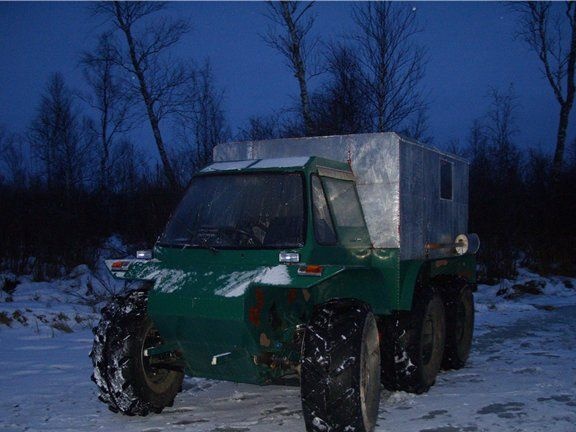
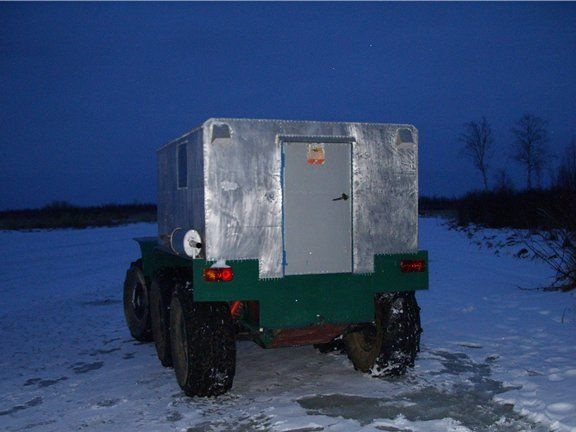
To summarize, I can say that the author did not meet the initial plans for the mass of the all-terrain vehicle, but he found an excellent way out of the situation and by installing a more powerful engine he achieved the desired parameters for the speed and power of the all-terrain vehicle.
The author of this all-terrain vehicle Sergey from the Tomsk region of the village of Parabel.

